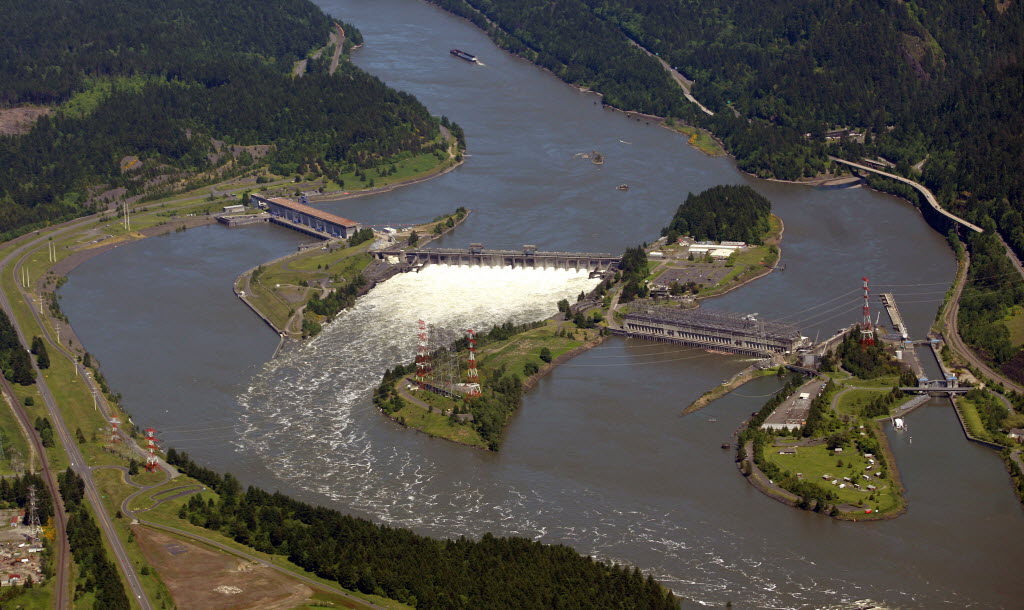State and federal officials are working to stop an oil leak at Bonneville Dam that’s putting an estimated one to two tablespoons of oil per day into the Columbia River.
While small, the leak has persisted intermittently for more than a month, according to a state incident report. The U.S. Army Corps of Engineers has identified a source and is working on a fix, said spokesman Matt Rabe. But until that happens, oil continues to seep from the 75-year-old hydroelectric facility into the water.
The Army Corps has placed absorbent boom on the water to keep the oil sheen from spreading, Rabe said.
“We do everything we can to prevent oil from getting to the water, and being trained to respond to capture and remove what we can,” Rabe said.
The leak appears to be coming from an oil-water separator in a powerhouse on the Washington side of the structure, Rabe said. It’s not yet clear exactly what’s causing it, or when it will be resolved, he said.
The leak was reported Feb. 4 to the state Department of Ecology. The oil dissipated before workers could pinpoint a source, but small amounts have continued to seep out at times since then, Rabe said. The Army Corps, which operates Bonneville Dam, has provided regular updates to state and other federal officials.
Rabe said the relatively small amount of oil being released into the river isn’t enough to be able to recover. But that doesn’t mean it’s not enough to take notice, said Ecology spokeswoman Linda Kent.
“A little bit of oil can cause a really big sheen,” Kent said. “It can look pretty spectacular even if it’s just a little bit.”
She added: “Any sheen is a concern.”
Oil leaks aren’t uncommon in the Columbia Basin, which includes dozens of aging federal dams. The complicated, decades-old structures include many components that require oil to keep them running.
In 2004, the Army Corps took heat for its handling of an oil spill at The Dalles Dam that released 1,300 gallons of oil into the Columbia River. The agency promptly reported and responded to subsequent smaller spills, and other incidents have followed in more recent years.
That’s one of the unfortunate realities of having dams on the Columbia River, said Lauren Goldberg, staff attorney with advocacy group Columbia Riverkeeper. But it’s an unacceptable outcome for fish and people who use the river, she said.
Goldberg said it’s also troubling to see only vague estimates of how much oil is spilled when such incidents happen.
“They don’t have a really good way to measure that,” Goldberg said. “That’s a real problem.”
Rabe said the oil sheen produced by the most recent incident at Bonneville Dam is contained within the absorbent boom. The Army Corps will continue to work with other authorities as it develops a solution, he said.




